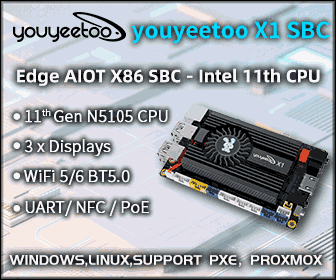Samsung ARTIK 053 WiFi IoT Module Runs Tizen RT on an ARM Cortex R4 MCU
Samsung has just introduced the latest member of its Artik family at IoT World 2017. ARTIK 053 is a WiFi module powered by an ARM Cortex R4 wireless micro-controller @ 320 MHz with hardware based security, GPIO, SPI, and I2C ports, and running Tizen RT real-time operating system. Artik 053 module specifications: MCU – 32-bit ARM Cortex R4 @ 320MHz with 1280 KB RAM for general use, 128 KB RAM for global IPC data (likely Samsung Exynos i T200, or a variant without an ARM Cortex M0+ core) Storage – 8 MB flash Connectivity – 802.11 b/g/n WiFi @ 2.4 GHz Expansion – 29 dedicated GPIO ports, 2x SPI, 4x UART (2-pin), 4x ADC, 1x JTAG, 2x I2C Security – AES/DES/TDES, SHA-1/SHA-2, PKA (Public Key Accelerator), PRNG/DTRNG (Random Number Generators), Secure key storage, Physical Unclonable Function (PUF) Power Supply – 5 to 12VDC input voltage Dimensions – 40 x 15 x […]





